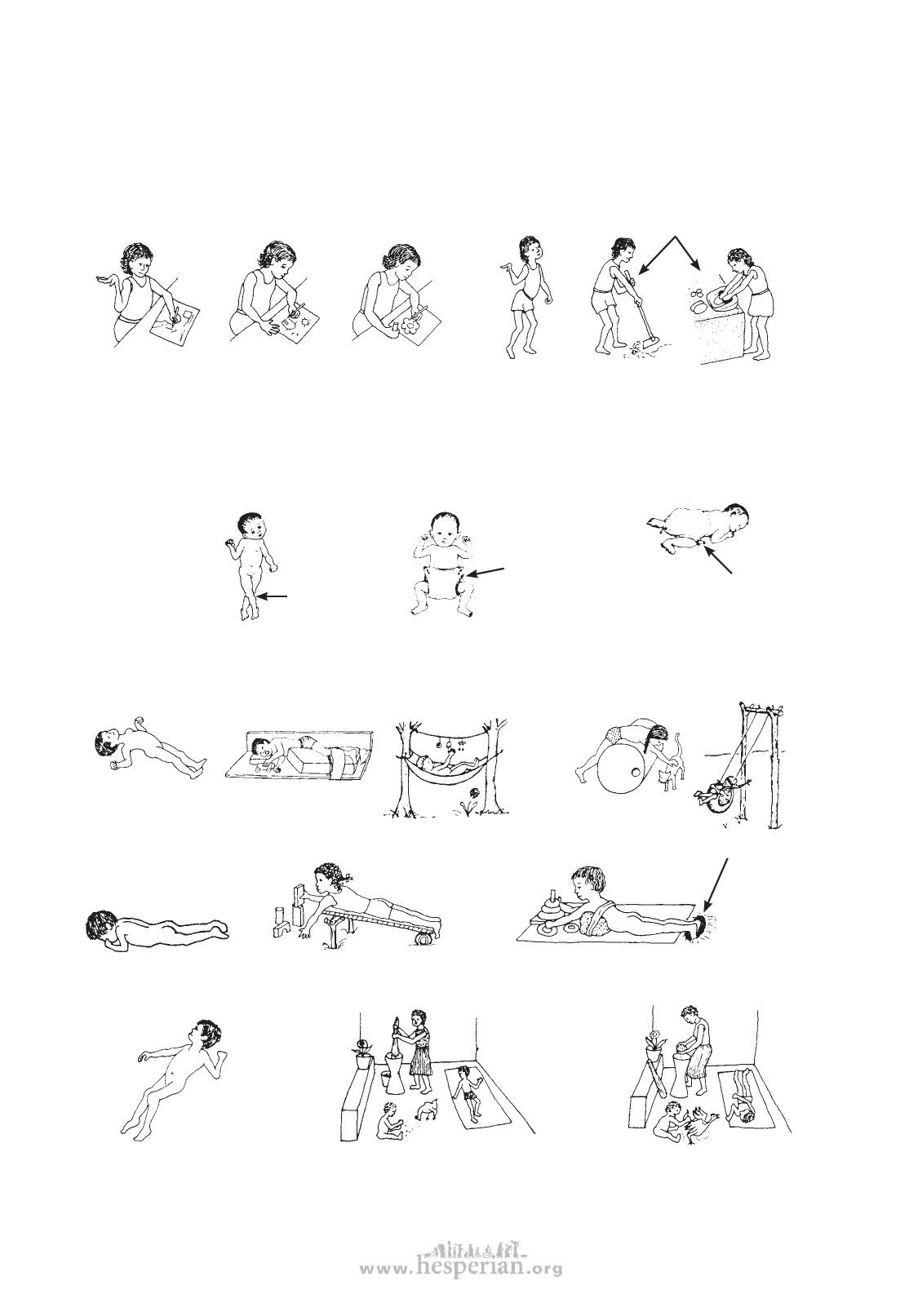
96 chapter 9
When the child with cerebral palsy moves she may do so in a very strange or
abnormal way. To some extent this should be allowed, as long as the child is able to do
things as best she can. But also show the child other ways to move in order to correct
some of the abnormal positions that she repeats again and again. For example,
If her arm
repeatedly
bends up.
encourage her
to reach out and
hold objects.
Or she may
need a post to
hold on to.
If she bends
backward a
lot,
she needs actions that
bend her head, body,
and shoulders forward,
like these.
Corrective actions and positions can be found while working in the fields, in the home,
or while playing with brothers and sisters. Here are some more suggestions for corrective
positions (from physical therapists Nancy Finnic and Sophie Levitt).
Lying and sleeping
Try to find ways
for the child to be
in positions that
correct or are
opposite to his
abnormal ones.
For example,
if the baby’s
knees usually
press together
or his legs
cross like
scissors,
If the child’s
body often
arches backward,
try positioning him
to lie and play on
his side.
The baby’s legs
can be held
apart by using
many thicknesses
of diapers
(nappies) like
this,
or by pinning
her legs like this
(when sleeping).
Look for ways to ‘break
the spasticity’ by
bending him forward,
or over a barrel
(or beach ball or
big rock, etc.),
or in a car
tire swing.
in a
hammock
If the child does not have
enough control to reach
out in this position,
help position
him so he
can lift his
head using
his arms.
hole in the
ground to
prevent
tiptoeing
If the child’s
head always
turns to
the same
side,
do not have
him lie so
that he turns
his head to
that side to
see.
Instead, have
him lie so
that he has to
turn his head
to the other
side to see the
action.
WRONG
For more suggestions on head control, see p. 302.
RIGHT
Disabled village Children